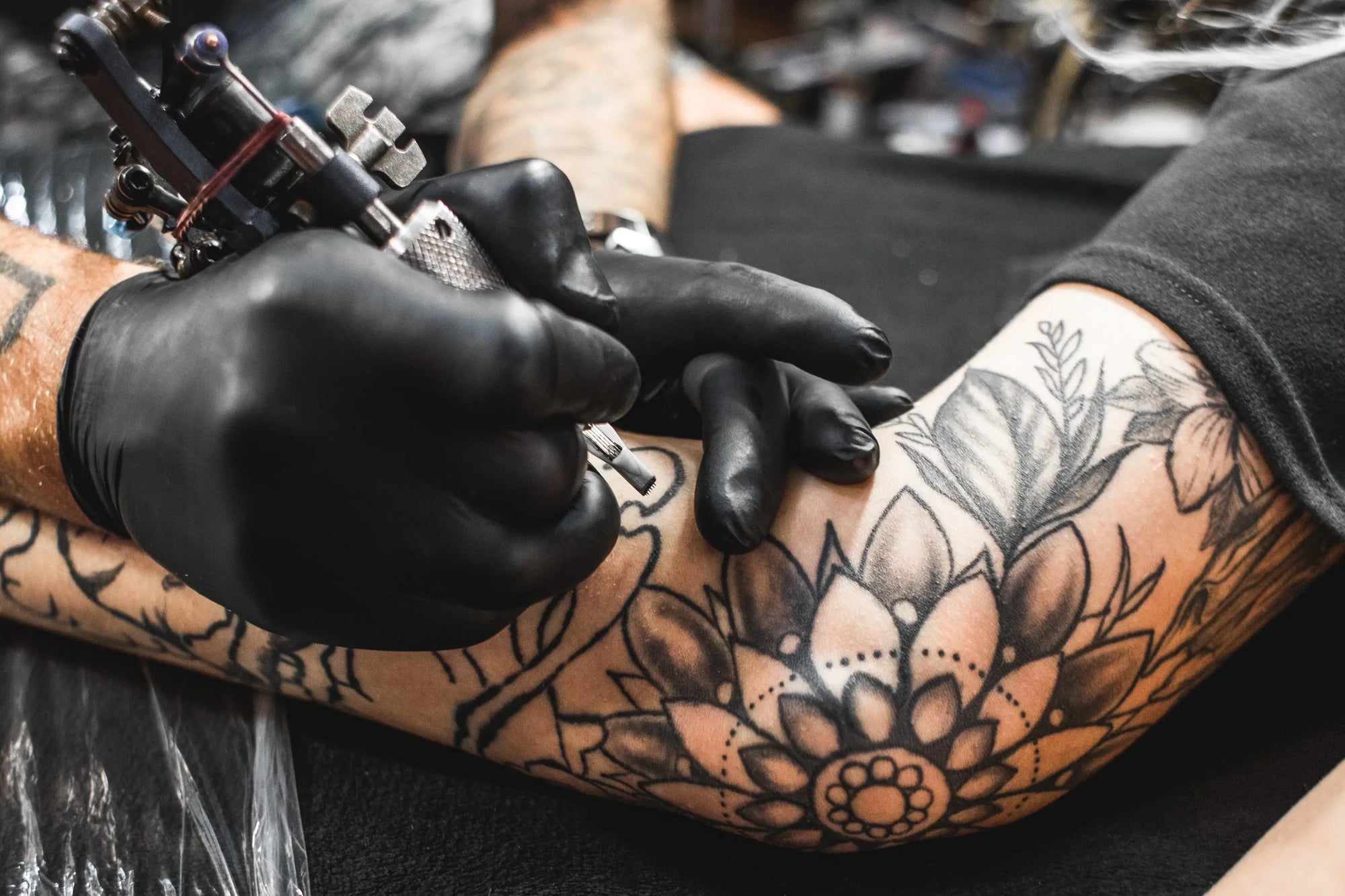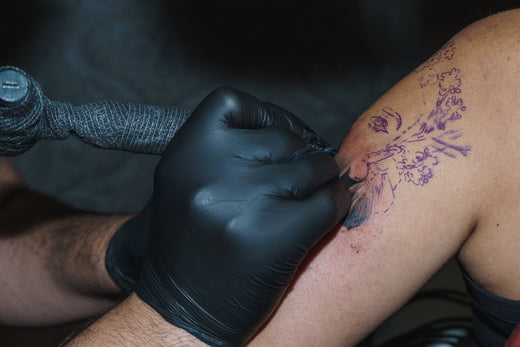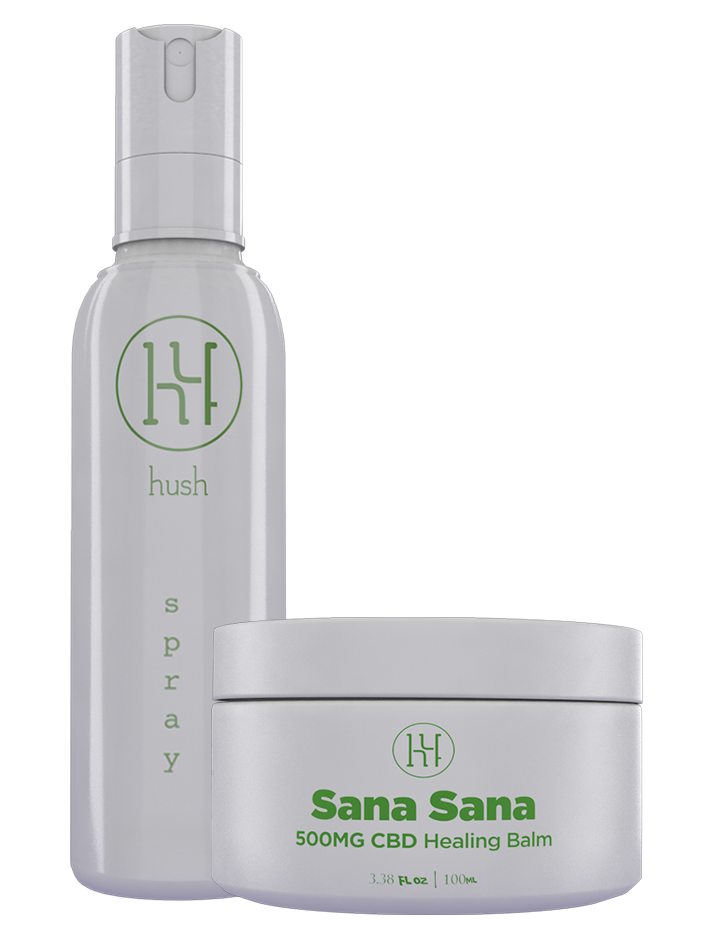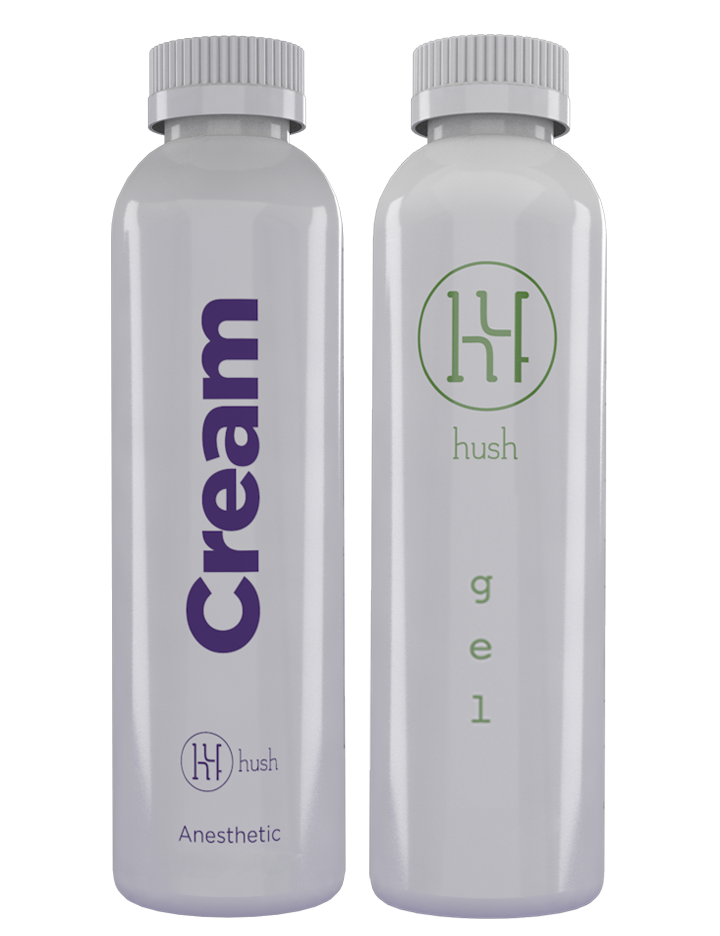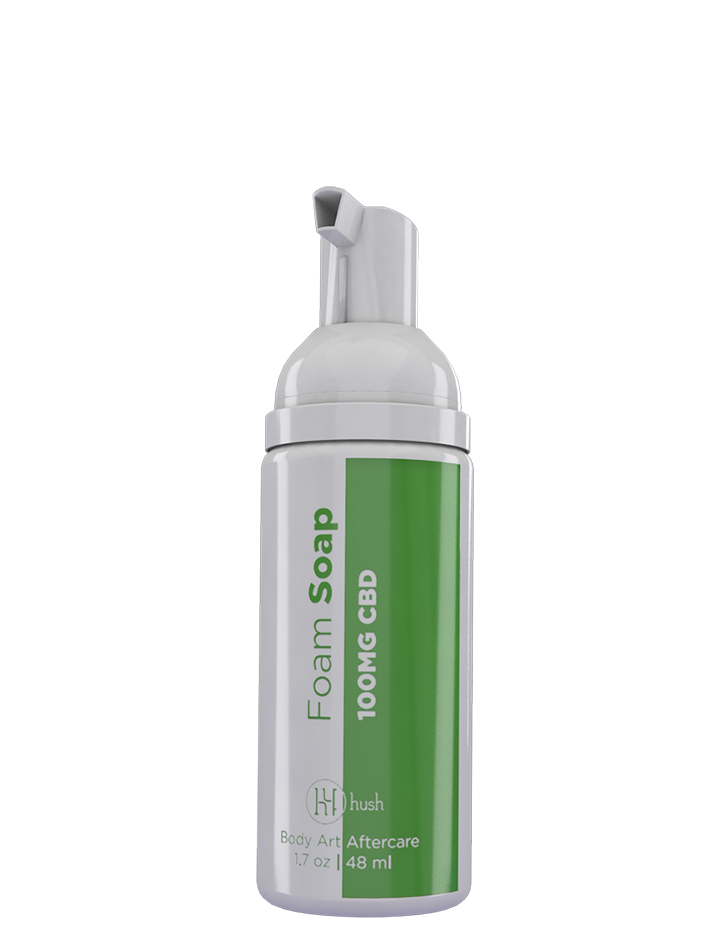
$10.99
We know you plan to take care of your new tattoo, but you may be neglecting your new ink without even realizing it. We’re here to lay it all out there. The good, the bad, and the ugly of tattoo aftercare.
Keep scrolling for what you need to know.
What Is Tattoo Aftercare?
Tattoo aftercare is the process of caring for your tattoo at home after you get your new ink. You may not get the instructions you need for one reason or another, and you are left to your own devices (which is why we’re here!)
How often do you clean your tattoo and moisturize it, and do you replace the bandage?
Tattoo aftercare is crucial to maintain healthy skin, preserve your new ink, and avoid infection. Aftercare also affects the overall healing and look of the tattoo in the end. So, what does that look like, and what actions should you take to preserve your masterpiece for the long run?
How Do I Handle the First Month of the Tattoo Healing Process?
Tattoo aftercare is a lifelong process, but it’s especially important for the first six to eight weeks after you get your tattoo. Your tattoo is still an open wound during the first few weeks, and the aftercare process is equal parts tattoo maintenance and first aid.
The First Day
Your tattoo artist will likely send you home with the day one aftercare tasks already completed. You may have an extra layer of plastic wrap or tape over your tattoo that you can take off whenever your artist says it’s okay to do so — usually a few hours.
Most tattoo artists use a clear bandage sheet (like SaniDerm or something similar) to cover your tattoo. Fluid (colored by ink and blood) might build up under the sheet. This is normal; you may be instructed to leave the sheet on until the next day. The sheet protects your tattoo from germs and damage while keeping it moist with your body’s plasma, which contains natural healing factors.
Your artist will tell you when it’s time to remove and replace this clear sheet. Peel it away and be ready for the fluid to ooze everywhere — keep a clean paper towel handy, or remove the sheet with your tattoo over the sink.
Use an unscented antibacterial soap and warm water to wash the area, apply the ointment your artist recommended, and put a new sheet on to protect your tattoo.
Days 2 Through 4
Your skin is still kind of in shock, and that’s okay. Your tattoo might look dull and might seem to be losing ink. If you’re following your artist’s aftercare instructions, your tattoo is perfectly fine.
Your body is shedding the layer of damaged skin on top, and the ink from the dead skin is being purged. It’s nothing to worry about. Keep following your artist’s instructions — your tattoo is still gorgeous under there.
Days 5 Through 7
Your artist will usually allow you to stop replacing your clear protective sheets during this time, but it’s still important to regularly wash and moisturize your tattoo. The skin will be very tender.
Avoid wearing tight clothing that can create friction against your bare tattoo. Avoid direct sunlight and keep applying an artist approved ointment or balm to keep your tattoo from drying out.
You might notice some scabs or flaking patches, and this is normal. Don’t touch them. If you pick or scratch at them, there’s a good chance a chunk of your tattoo will come off with them. You’ll wind up with scars or missing ink. Resist the temptation, trust the process, and wait it out.
Days 7 Through 14
The scabs should naturally fall away with time and proper care, but you’re probably going to be very itchy. It’s tough to navigate this itchy, peeling stage without scratching or picking at your tattoo, but we believe in you. Although the risk of infection goes down at this stage in the healing process, scratching can cause micro-wounds that bring the risk back up.

The HUSH tattoo aftercare set contains a numbing spray that can moisturize your tattoo and promote the healing process while dulling the itching sensation. If you don’t feel the itch, it can’t drive you crazy.
Days 15 through 30
Light maintenance can help the healing process along the rest of the way. Your tattoo may still feel dry all the time, so it’s important to keep it moisturized.
You can wash your tattoo with the rest of your body in the shower if you use a gentle, fragrance-free body wash. You’re also good to take a bath or go swimming.
Keep using your sunscreen to protect your skin while the layers beneath your tattoo heal and regenerate. It can take up to three months to see the vibrancy of your finished tattoo, but if you take great care of it during the healing process, it will look nearly as bright as it did the moment your tattoo artist wrapped you up.
What Are the Tattoo Aftercare Dos?
Listen To Your Artist
Your artist should cover your tattoo with a sterile absorbing pad and bandage after your session and give you instructions on how to uncover and clean your piece at home. Some adhesives may cause irritation, so be sure to disclose any allergies to your artists.
Tips: The most important step you can take on the first day of your tattoo aftercare is to understand your tattoo artist’s instructions completely. If you are unsure of any steps of your tattoo aftercare day by day, be sure to ask them for clarification.
Taking Off Your Second Skin and Cleaning Your Tattoo
Proper aftercare is the single most important factor in preserving your tattoo. Your artist already told you when you should remove your bandage and how you should clean your tattoo. If you don't remember the instructions, give the tattoo shop a call. They'll gladly refresh your memory to protect your piece.
The first step in your tattoo aftercare routine is removing the second skin applied by your tattoo artist. This layer protects your sensitive skin during the initial healing phase, and it's important to be really gentle when you take it off.
On the first night, or as instructed by your artist, carefully peel off the second skin. It’s best to do this in a clean environment, preferably while standing in the shower.
Start by gently rolling a corner up without applying pressure. It should peel off and dump out a bunch of ink-stained fluid. The fluid buildup is an important part of the healing process, and it's going to splash. Make sure you're not going to leak on anything important.
Once the second skin is removed, it’s time to clean your tattoo. Use lukewarm water because hot water can irritate your tattooed skin and cause discomfort. Use a mild, fragrance-free cleanser suitable for sensitive skin. Many tattoo artists recommend plain orange antibacterial soap or a tattoo-specific cleanser.
Avoid submerging your tattoo in water, like in a bathtub or at the beach, because your tattoo can become waterlogged, and potentially infected.
After cleaning, pat your tattoo dry with a clean, soft towel or allow it to air dry completely. Moisture can trap bacteria, so it’s crucial to ensure the area is dry before applying any aftercare products. Your artist may have sent you home with some more second skin to apply over the top.
Keep an eye on your tattoo for any signs of infection, such as excessive redness, swelling, or unusual discharge. If you notice anything concerning, call your tattoo artist or your dermatologist for advice.
Tips: Keeping your tattoo clean is the most important job in your aftercare process right now. One of the best ways to do this is to find the right tattoo aftercare soap. You’ll want a soap that can clean the area effectively, as well as be gentle on the healing skin. HUSH’s CBD foaming soap is a great option.

All the washing can take out the moisture on your skin, so a few days after you’ve been inked, apply just a thin layer of ointment or anesthetic gel. We suggest that you continue to keep your skin hydrated by applying a mild and non-scented lotion after washing it. Well-hydrated skin is healthy skin, and faster healing is possible with healthy skin.
After washing, make sure to only dry your tattoo with a fresh towel paper towel or anti-microbial washcloth designed for tattoos.
Use Soothing Products
Since tattoos heal up like wounds, it’s common to feel some irritation and swelling after your appointment. To help lessen any discomfort or reduce redness, apply soothing, pain-relieving gels and creams to help provide additional comfort. You can also use topical anesthetic spray on new tattoos to soothe excessive discomfort.
Keep It Exposed
After your sesh, keep the bandage on for about three hours (though your artist will specifically tell you how long to keep it — some wraps should stay on for up to a week to support healing). The bandage will help absorb some of the blood, goop, anesthetic cream, and fresh ink, and keep it from soiling your clothes. After you remove that initial bandage, keep your tattoo exposed as much as possible for quicker healing.
If you wear clothing that covers your tattoo, make sure it’s loose-fitting. This helps to prevent the fabric from pressing against your tattoo. If you opt to show off your new ink, wear your tattoo with pride.
What Are the Tattoo Aftercare Don’ts?
We realize that no one intentionally sets out to mistreat their new tattoo. Come on, you’ve waited for what seems like an eternity to get that ink; now you have it, so what’s next?
Even people with the best intentions may accidentally mistreat their tattoo, sacrificing its integrity (and even appearance) in the process.
Here are some things you shouldn't do when caring for your new ink:
Is Dry Healing a Tattoo Bad?
The dry healing method is a controversial one—some people say that moisturizers trap bacteria in the wound, but if you use the correct tattoo moisturizer, this should not happen.
Dry healing may cause:
- Itching - Dry skin leads to itchy skin, especially when healing. Itchy skin leads to the temptation to scratch or pick at the area, and this may cause scarring, impact the design, and cause bacterial infection. Keep those claws away from your ink!
- Tight Skin and Scabs - Dry skin often becomes tight and cracks, forming scabs that distort your tattoo.
- Infections - The most common bacterial infections that tattoos develop are streptococcus and staphylococcus (yikes). Keep your tattoo moisturized with a tattoo balm that soothes dry, healing skin. It’s almost like we thought of that…
Can You Use a Loofah To Wash Your Tattoo?
Negative. Do not use a loofah, sponge, washcloth, or other abrasive items to clean your new tattoo.
A fresh tattoo is a wound, so you must treat it as such. Scratchy, rough loofahs exfoliate the skin and may cause infection or bleeding on the tattooed area. Gently wash the tattoo with your clean hands and a tattoo foam soap and pat it dry with a lint-free towel.
Make sure the tattoo is dry before applying moisturizer to the area. Comprende?
Can You Take a Bath With a New Tattoo?
No way, Jose. Don't submerge your new tattoo in bathwater, swimming pools, hot tubs, or any other kind of open water whatsoever.
Avoid the gym, saunas, and any other warm, moist environment for at least a few weeks post-tattoo service.
Water and moist environments often contain bacteria and organisms that enter the wound and cause infection. Opt for a lukewarm shower instead. Do not allow the heavy stream of water to flow over the tattoo. Instead, gently cup water over it. Gently.
Doing this will keep it clean without allowing water to remain on the tattoo for an extended period of time.
How Much Ointment Should You Use on a New Tattoo?
A thin layer of a moisturizing balm is all you need to cover your new tattoo effectively. Applying too much may cause bacteria to become trapped underneath, causing a lack of fresh air to the tattoo. Apply moisturizer to your clean, dry tattoo two to three times per day for optimal healing.
Can You Scratch a New Tattoo?
No. It may be tempting to scratch that itchy ink, but trust us when we say, don’t do it.
Scratching, peeling, or picking your tattoo leaves light patches in the tattoo from ink loss, scarring, and possible infection. If you just can’t resist the urge, gently pat the tattoo with the palm of your (clean!) hand or apply a little more moisturizer.
Can You Step Outdoors Sans Sunscreen With a New Tattoo?
No one is stopping you, but we don’t recommend stepping outside without sunscreen with SPF 30 or higher. Your new tattoo is already raw, so allowing its exposure to the sun is like chicharrones in a frying pan. Ouch!
The sun may cause blistering or alter the color of your tattoo, not to mention pain. Opt for mineral sunscreen when possible, and wear light, loose, cotton clothing over the tattoo. When your tattoo heals, always cover it with sunscreen to prevent color and line fading.
It is normal for your tattoo to lighten up because new layers of skin are growing, and your skin is still accepting all the ink that was introduced to it. Sunscreen can also help keep your tattoo solid and bright while it sets into your skin. If possible, choose sunblock brands that are specifically designed for tattoos.
Can You Exercise With a New Tattoo?
Is it possible to work out after a new tattoo? Intense workouts cause your muscles and joints to move around excessively.
Large tattoos, especially those around joints (knees and elbows), take longer to heal. Repeated workouts cause repetitive movements that irritate new tattoos, causing the skin to become red and cracked, and possibly prolonging the healing process.
Take a couple of rest days, gym bro.
Can You Wear Sandals With a New Tattoo?
It is crucial to shield all new tattoos from dirt, especially foot tattoos. Avoid wearing sandals that expose your feet to dirt or wearing tight shoes that rub against the tattoo. Opt for loose, close-toed shoes instead — slip-on shoes or tennis shoes are good options.
Make sure you clean your tattoo several times per day, and once it heals, you are free to wear whichever shoes you fancy (even if they’re a fashion hazard).
Can You Shave Over a New Tattoo?
It only takes one swipe of a razor to answer this question for yourself. Shaving over your new tattoo is never a good idea for many reasons.
- Razors harbor bacteria, so prevent infection by not shaving over your tattoo.
- Shaving over scabs is never a good idea; again, infection.
Keep your tattoo covered, and don’t stress over a bit of leg hair for a week or two. Your tattoo is worth the wait, chica. Let it grow.
Can You Touch Your New Tattoo?
By the end of day eight or so, some of the first week’s side effects should be lessening. Some people find that their discomfort is less, but that their itching continues or even gets a little worse.
Itching is normal during this week, and you can expect scabs may be falling off. The combo of itching and loosening scabs is enough to make anyone want to pick at the tattoo area. But don’t! It’s important to leave your tattoo untouched as much as possible. Picking at scabs can even disturb the healing ink, causing distortion to the tattoo.
Touchy-feely is great and all, but not on a new tattoo. Beware of admirers that are tempted to touch your ink. Don’t allow anything, including hands, to come in contact with your new tattoo. Hands have germs and bacteria that can cause infections.
Wash your hands before you clean your tattoo to ensure you aren’t spreading germs.
Do You Have To Follow Tattoo Aftercare?
If you want your tattoo to remain vivid in color, with crisp detail and healthy skin, then yes, you must follow tattoo aftercare instructions.
Quite possibly, the worst tattoo aftercare is none at all. You must clean, dry, moisturize, and protect your new tattoo several times every day for a few weeks until it heals.
Even up to a month after your appointment, it’s still important to follow some basic aftercare steps. It is unlikely that you’ll get an infection at this point, but you still want to keep the area clean.
You’ll also still want to avoid too much direct sun and be careful with the area. It can seem like the tattoo aftercare process takes forever, but you’ll soon be through it.
A tattoo is a lifetime investment, so it’s worth doing everything possible to follow the recommended tattoo aftercare day by day. HUSH’s products — especially the CBD foaming soap — are a great way to help your tattoo heal well.
How Long Does It Take a Tattoo To Heal?

So how long does it take a tattoo to fully heal? The outer layer of your skin (the skin you see) should heal within two to three weeks.
However, the skin underneath can actually take up to six months to fully heal. The healing process occurs in stages and can vary for different people. Applying the above Do's and Don'ts of tattoo aftercare can help the process.
How Do You Know if You Have an Infection?
Bad tattoo aftercare often leads to infection, so listen to your body. If something doesn’t feel right, trust your gut.
See a doctor immediately if you develop any of the following uncomfortable symptoms:
- Excessive redness, bumps, or rash
- Excessive pain or irritation
- Blisters or boils
- Oozing pus (remember, a tiny bit of plasma oozing is okay, but pus — no bueno)
- Chills or fever
If your tattoo shows any of these signs, see your doctor immediately because it may be a sign of an infection. Doctors generally treat these conditions with antibiotics, so it is important to see a doctor immediately.
Things To Do Before Getting a Tattoo
Before heading to get your ink, consider these tips to ensure a healthy tattoo before the ink even touches your skin.
- Por favor, consult your doctor before getting a tattoo if you suffer from any disease.
- Do your research to find a reputable artist who practices in a state-licensed, clean and sterile environment.
- Avoid alcohol the day before your tattoo session, and drink plenty of water to keep your skin hydrated.
- Eat a healthy meal that does not upset your stomach before your session, so your stomach is full and comfortable.
- Have your tattoo aftercare products ready, so your cleaning protocol runs smoothly.
To Sum It Up
Tattoo aftercare is crucial if you want your tattoo to remain healthy and keep its vibrant color and crisp design. Neglecting your tattoo affects the overall quality of the work, leaving you with lots of regrets. So, keep it clean, dry, and moisturized while considering the above precautions, and your new tattoo will be healed in no time.
HUSH Numbing & Aftercare
Your tattoo is fine art and will require a lifetime of aftercare. Listen to your tattoo artists about best practices to ensure your body art heals properly, and only use trusted tattoo aftercare products.
HUSH anesthetic tattoo numbing and aftercare products provide you with quality, affordable tattoo skincare products. Whether you are the tattoo artist or the client receiving the ink (or both), our products serve a purpose in your tattoo experience that helps you focus on the art instead of the ouch.
Sources:
Tattoos: 7 Unexpected Skin Reactions and What To Do About Them | American Academy of Dermatology
